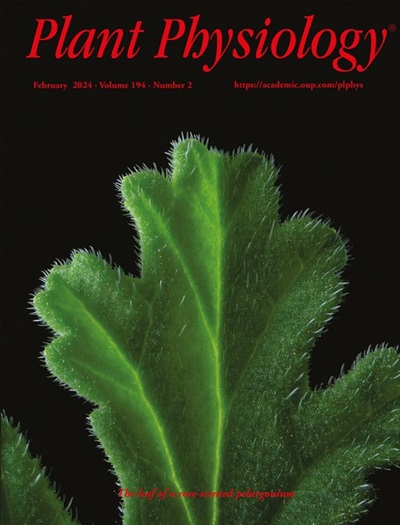独立于非光化学淬灭的过程保护一种耐强光的沙漠藻类免受氧化应激影响
IF 6.5
1区 生物学
Q1 PLANT SCIENCES
引用次数: 0
摘要
非光化学淬灭(NPQ)机制对于保护植物、藻类和蓝藻的光合作用免受光抑制至关重要,而调节这种机制是提高光合作用和作物产量的长期目标。目前的研究表明,小球藻(Chlorella ohadii)是一种在沙漠中茁壮成长的绿色微型藻类,它在持续强光下既不执行也不需要 NPQ 来保护光合作用。它不是耗散多余的能量,而是通过消除光系统 II 的光合天线来最大限度地减少能量吸收。此外,它还积累抗氧化剂,以中和有害的活性氧(ROS),并增加 PSI 周围的循环电子流。事实证明,这些不依赖于 NPQ 的反应能有效防止 ROS 的积累,并减少高光生长细胞中蛋白质的氧化损伤。本文章由计算机程序翻译,如有差异,请以英文原文为准。
Processes independent of nonphotochemical quenching protect a high-light-tolerant desert alga from oxidative stress
Non-photochemical quenching (NPQ) mechanisms are crucial for protecting photosynthesis from photoinhibition in plants, algae, and cyanobacteria, and their modulation is a long-standing goal for improving photosynthesis and crop yields. The current work demonstrates that Chlorella ohadii, a green micro-alga that thrives in the desert under high light intensities that are fatal to many photosynthetic organisms does not perform nor require NPQ to protect photosynthesis under constant high light. Instead of dissipating excess energy, it minimizes its uptake by eliminating the photosynthetic antenna of photosystem II. In addition, it accumulates antioxidants that neutralize harmful reactive oxygen species (ROS) and increases cyclic electron flow around PSI. These NPQ-independent responses proved efficient in preventing ROS accumulation and reducing oxidative damage to proteins in high-light-grown cells.
求助全文
通过发布文献求助,成功后即可免费获取论文全文。
去求助
来源期刊

Plant Physiology
生物-植物科学
CiteScore
12.20
自引率
5.40%
发文量
535
审稿时长
2.3 months
期刊介绍:
Plant Physiology® is a distinguished and highly respected journal with a rich history dating back to its establishment in 1926. It stands as a leading international publication in the field of plant biology, covering a comprehensive range of topics from the molecular and structural aspects of plant life to systems biology and ecophysiology. Recognized as the most highly cited journal in plant sciences, Plant Physiology® is a testament to its commitment to excellence and the dissemination of groundbreaking research.
As the official publication of the American Society of Plant Biologists, Plant Physiology® upholds rigorous peer-review standards, ensuring that the scientific community receives the highest quality research. The journal releases 12 issues annually, providing a steady stream of new findings and insights to its readership.
 求助内容:
求助内容: 应助结果提醒方式:
应助结果提醒方式:


